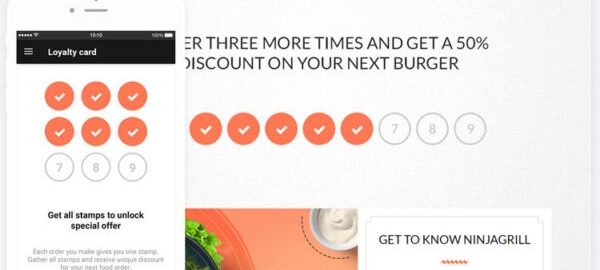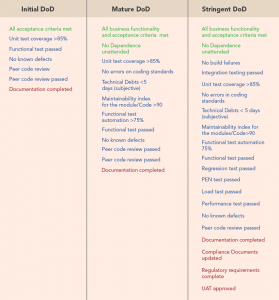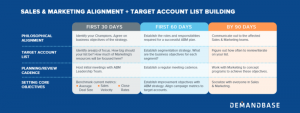“But, I don’t want any more leads” …said no one ever. Gaining new leads for your business should always be a priority and, any self-respecting brand should have a solid strategy in place to do just that. There are, of course, tons of ways to get new leads and, today, we’re going to be talking about one of the most powerful – engagement with customers and potential customers.
And………..engage!
First of all, what do we mean by engagement? In the days of old, there were two ways of starting a dialogue with customers and potential customers – in person and by snail mail. This rudimentary form of engagement might have involved stopping people in the street to ask them to complete a short survey or, doing the same thing by post or telephone. In these digitally enlightened times, we have so many more methods at our disposal and, for that reason, the term ‘engagement’ in a business sense has evolved. These days, we talk about engagement in terms of inviting dialogue with a view to increasing interest in our brands and turning potential customers into ones who make purchases.
Marketers and salespeople are forever coming up with new and innovative ways of securing new leads and, most would agree that engagement is, without a doubt, the way forward. We’re not talking about those 80’s style phone calls (‘Hey Bob, how are you? Just calling as I thought you should know about our incredible new offer) but, a more subtle and effective method of engaging. In this article, we’re going to walk you through the different ways you can use engagement to supersize your leads strategy.
To boldly go
Before we start going into detail about engagement, let’s separate it into direct engagement and non-direct engagement and, just to be awkward, I’m going to start with non-direct engagement. Ready? Let’s go….
Non-direct engagement
This form of engagement involves reaching out to – and obtaining information from people without direct contact and, is often a great way of involving a large number of people in your engagement. The following are some of the ways in which non-direct engagement can work:
Online surveys
Surveys are a great way of getting feedback on your brand or product and, for finding out what it is that your customers and potential customers actually want. You can set these surveys up quickly and easily either on your website or on your social media platforms. These surveys can be completed anonymously and, should only take a few minutes (any longer and people will tend to lose interest and abort the survey).
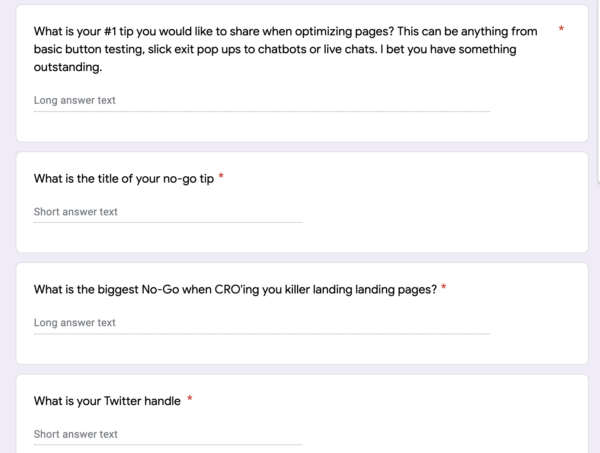
- Source: Google Form
This will allow you to get a really good idea of how people feel whilst sneakily introduction your brand or product to them. When submitting an online survey, it’s best to keep questions short and simple (you can always include a box for further comments at the end). Try including an incentive to those who agree to a more detailed survey, such as a discount or free product.
Sentiment analysis
Sentiment analysis has been huge over the last few years – and for good reason. Harnessing the power of artificial intelligence, sentiment analysis tools scour the internet for mentions of your brand, service or product and, then, neatly categorises these mentions into three boxes – Positive, Neutral and Negative.
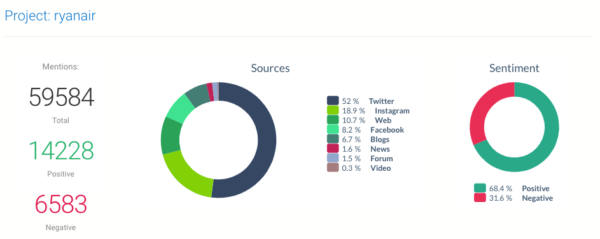
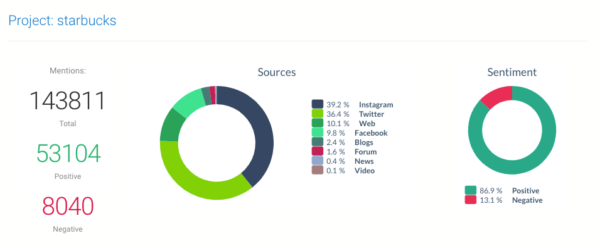
- Source:Brand24
This kind of non-direct engagement allows you to snoop on your customers (in a good way, rather than a weird peeping Tom way) in order to find our what they love about your brand – and what they don’t. Most sentiment analysis tools will also give you the option to contact a particular commenter to delve further into why they feel the way they do (I realise that this would technically take sentiment analysis into ‘direct engagement’ but, it’s my article, so it’s staying here). As well as providing non-direct engagement with your customers, sentiment analysis can help significantly when dealing with reputational issues or crises.
Get personal
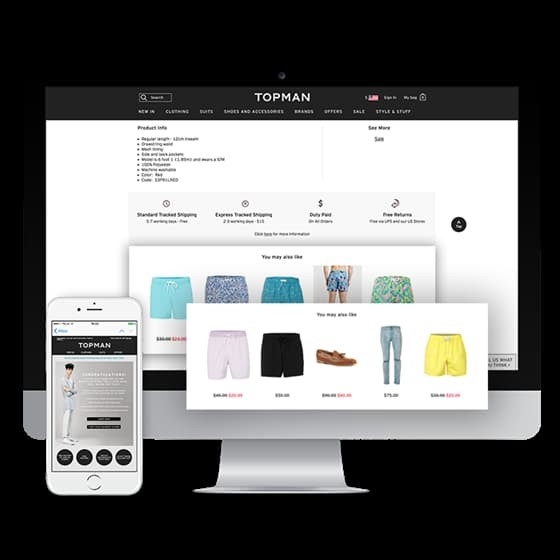
- Source: Episerver
One of the most important methods of non-direct engagement is to increase the personalisation of your service. Although this may sound like an oxymoron, bear with me. In 2020, you have plenty of tools at your disposal which will help you to deliver a personal service without engaging directly with your customers. Tools like Optinmonster use artificial intelligence to make intelligent personalisations through your website in order to increase conversion. Although you’re not in direct contact with your customer, the fact that they are enjoying a personalised customer journey will increase their loyalty to your brand.
Direct Engagement
Direct engagement involves a more grass roots method of contact and, can be a tricky one to master – but really effective once you do. With this kind of engagement, you’ll often be communicating one-on-one and, will certainly have access to users’ names and other useful information. Let’s have a look at some methods of direct engagement:
Email outreach
There’s a good chance that this is already part of your lead building strategy but, it’s worth a mention here as it’s still a really good way of building up engagement. By emailing customers and potential customers directly, you can think outside the box – and get into their inbox. Although email outreach is incredibly effective, it only works when it’s done right – otherwise it’s just annoying and a waste of time. When performing email outreach, always make sure that you personalise each and every email (‘Dear reader’ is a definite no no) and, include at least two links to send them onto your site or social media platform. Finally, don’t inundate people with email fluff – once or twice a week is more than enough, otherwise you’ll see them heading straight for the ‘unsubscribe’ button faster than you can say ‘you’ve got mail’.
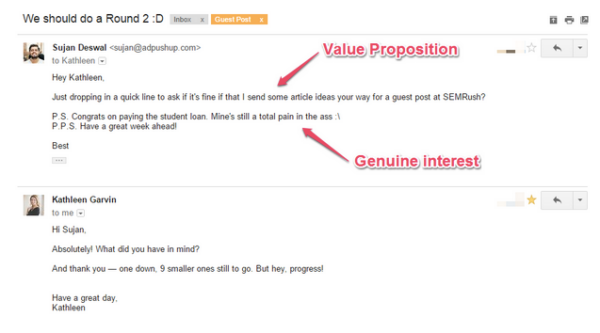
To make your email outreach more effective, you can also embed video content on it. According to the latest video marketing statistics, simply using the word “video” in the subject email can boost open rates by 7%. The highly-engaging format can also increase the click-through rates (CTR) up to 300%.
The allure of this video embedding is quite simple: in the time where you people receive thousands of emails every day, getting a different one is quite meaningful and much more convincing to click. Therefore, placing including videos can avoid your emails from getting buried and rotten on your sendees’ inbox. You can use any video to be embedded in your email. But, short and straightforward ones are always better. You can try with explainer videos, testimonial videos, product demo, and more.
Competitions / Giveaways
Everybody likes to get something for nothing – particularly your customers. This means that, as a brand, you have a superhighway to new leads by using this method. For ultimate engagement, run an ad which offers the chance to win a product or service from your brand – but don’t just ask entrants for their name and email address. Get creative and encourage proper engagement by asking the to answer a question such as ‘what’s your favourite snack?’ or, ask them to perform a task to secure entry such as ‘complete this sentence – I love to travel because…….’ By doing this, you’re getting people to stop and think about their entry rather than just auto-filling their details – which means that your brand will stick in their mind for longer.
When running your ad, consider creating a competition-specific landing page rather than sending entrants to your website for the best results. This works as, it ensures that, when clicking on your ad, the entrant is taken to a page with the same or similar content – rather than a generic home page which may lead them to lose interest. This will also make it easier for you to track the journey that customers are taking from your social media presence to your competition. Keep the content on your landing page short and on-point – and make sure that your call to action takes up at least a quarter of the page.
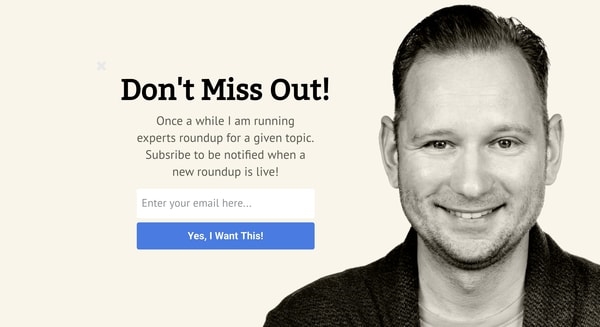
- Source: Milosz Krasinski
Don’t panic if you’re not massively technically minded – there are some easy peasy tools out there which can help you to put together a really professional looking landing page quickly and affordably.
Content
Yes, I know, I know – you’re sick of hearing about how important content is but, I’m going to say it anyway. Creating great content for your site is essential for bringing more visitors to your manor and, is also great for increasing engagement. These days, it’s all about value when it comes to the internet.
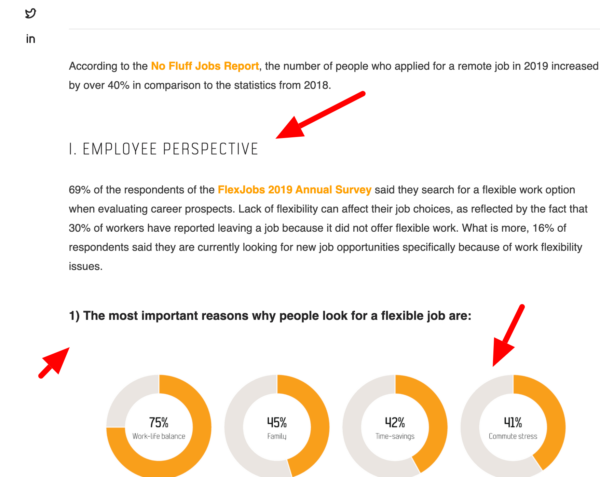
- Source: Future Processing
Nobody’s interested in an advertorial which does nothing but shout about how great your brand is. Instead, put together content that your target audience will be interested in, and, most importantly, leave the commenting on! If writing’s not your thing, don’t be tempted to just put any old rubbish on your site – hire yourself a copywriter! Many brands find it helpful to create slightly controversial content in order to increase customer comments – although this can be effective, be warned that it might backfire on you.
The aim here is to invite visitors to let you know what they thought of the article and, to get in touch with any questions that they might have. This is very much one on one direct engagement and, so, you’ll need to be prepared to check your comments often and, to fully engage with the commenter (if you’re disinterested or distracted, it will show). This one takes quite a bit of input from you but can pay dividends in making visitors feel invested in your brand.
If I had to point out three things that are crucial in content creation, I would say content has to be personalized, substantive, and short. Personalized means adjusted to what your target audience would want to read – having different audience groups means you should provide them with different content. You can do it on landing pages or emails using dynamic content. Substantive means writing concrete, helpful guides instead of general tips filled with buzzwords. Short doesn’t need any further explanation – respect your time and the time of your readers.
Social Media
This one is so incredibly important that I’m going to break it down into three parts (and, by the way, if your brand isn’t yet on social media then stop reading this article immediately and make it happen).
Social media – the posts
Any decent social marketer knows the value of getting it right when it comes to social media posting. Just as a refresher, the rules here are:
- Post often – but not too often
- Include interesting content, not just sales stuff
- Invite engagement
- Include conversation pieces
- Use your SEO
Pretty simple huh? Of course, for this article, we’re focusing on point 3 – invite engagement and, here’s how it’s done:
Ask a question – when we talk about Facebook post engagement, likes are great but comments are better. End your post with an open-ended question such as ‘What do you think?’ or ‘Tell us your story’. We live in an increasingly fast-paced world and, the temptation to scroll past a post or to chuck a like at it and move on is great. What you’re after, instead, is an action that will take a few seconds longer and will therefore embed the name of your brand in their psyche. This is also a really effective way of making a customer feel valued – most people like to talk about themselves and, so, giving them the opportunity to do so on your platform will almost guarantee results.
Social media – the competition
We’ve just talked about how fabulous likes and comments are but, what’s better than likes and comments, shares – that’s what! The holy grail of Facebook marketing, getting people to share your posts gives you access to a huge number of potential new customers. One way to do this is to offer solid, great quality content (yes, we’re back to that again). Link your latest blog post to your Facebook post and, if it’s interesting enough, people will share it with their friends.
Referring back to your online competitions and giveaways, the best way to get people to share your posts is to offer them something in return. This one is beautiful in its simplicity – set up a post offering a free product or service and state that the cost of entry is a like and a share. I shouldn’t need to tell you this but, you will need to make sure that the competition is valid – and that you will send the prize as promised. Although this one does, obviously, involve an investment in terms of the product or service to be given away, if you do it right, this will be balanced out by all those new customers.
Social media – the event
If you’re a Facebook user, then you’ve probably seen people holding or hosting events on the platform. Whilst this option was originally set up for physical events such as concerts, parties, and get-togethers, the feature has since evolved. Brands can now set up events such as webinars, live chats, and more – and, you’ve guessed it, these can be a really good way of promoting direct engagement with customers. Set up an event that adds value such as a tutorial or live Q&A and invites Facebook users to join.
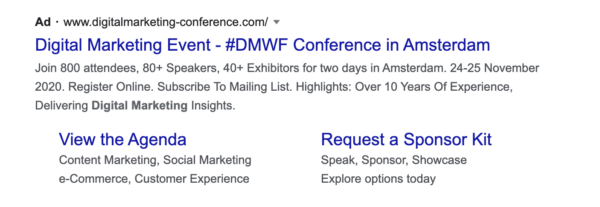
For an extra boost, you can add a touch of PPC advertising to get as many attendees as possible. An event such as a live video Q&A is particularly useful as this gives you the opportunity to have proper face-to-face conversations with your targets. Not only do customers receive an introduction to your brand but, they even get to put a face to the name.
The loyalty program
Loyalty programs have come a long way (baby) since the days when customers would get a few pence off their shopping by swiping their loyalty card at the checkout. These days, loyalty programs are a lot more sophisticated and are an important way of offering additional perceived value to the customer. They’re also a great way of – say it with me – increasing customer engagement. With a loyalty program, you already have a ‘captive audience’ in that you have a database of people who are willing to hear from you. Many brands make the mistake of setting up their loyalty program and then, basically, just letting it run itself – and these brands are missing a golden opportunity.
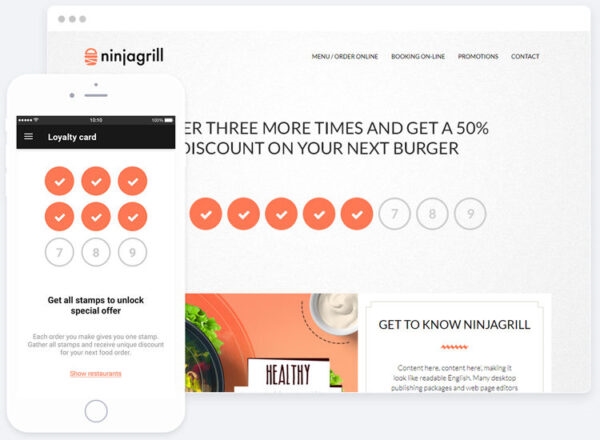
- Source: Upmenu.com
“Use your loyalty program to increase engagement by inviting open-ended feedback, for example, asking customers what kind of incentives they would like to see added to the program,” says Mark Truskolaski, CEO Upmenu.com.
This kind of engagement is invaluable as it makes customers feel valued – and, customers who feel valued stay loyal to your brand. As with any other kind of engagement, don’t harass your customers with multiple messages but, keep in touch consistently and intelligently.
Your engagement strategy – in a nutshell
A great engagement strategy will set your brand in good stead for many years to come. To make the most of this you need to:
- Define the customer journey map – get to know who your customer is and where they come from
- Identify the ways in which your customer interacts with your brand and, increase your presence on that platform
- Observe and personalise – this should be ongoing and intelligent
- Use your analytics to track customer activity and engagement to see where you can make improvements
- Deliver on promises
- Be responsive – don’t send generic replies to customer comments and messages
Getting your customer engagement strategy right from the beginning will save you a huge amount of work in the long run. Rather than an afterthought, customer engagement needs to be an integral part of the way your brand operates. Customer engagement is about figuring out what makes your customers (and potentials) tick and to make sure that you’re doing everything possible to meet their expectations and desires. When it comes to increasing your business leads, it really is good to talk!
Digital & Social Articles on Business 2 Community
(26)
